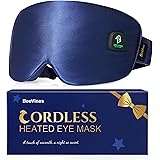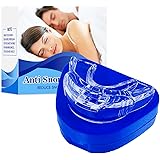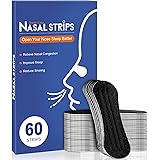Unveiling the Ultimate Sleeping Pads of 2023: An Expert Deep Dive for Backpackers
As brilliantly explored in the video above, selecting the right sleeping pad is not merely about comfort; it’s a critical decision impacting your safety, warmth, and overall backcountry experience. This single piece of gear insulates you from frigid ground and can be the difference between a restful night and a miserable one, or even a perilous situation in extreme conditions. For the seasoned three-season camper who occasionally ventures into colder spring and fall temperatures, understanding the nuances of modern sleeping pad technology is paramount.
Our comprehensive analysis delves into the intricate balance of price, comfort, warmth (measured by ASTM-certified R-value), and weight. These four pillars serve as the foundation for evaluating nine top-tier backpacking sleeping pads. We’ll build upon the video’s insights, offering a more granular look at what makes each pad shine or fall short, helping you make an informed investment in your outdoor adventures.
The Critical Metrics: R-Value, Comfort, Weight & Price Explained
Before we dissect individual pads, it’s crucial to grasp the significance of our four core criteria. These metrics provide a standardized way to compare diverse products, ensuring you can match a pad’s performance to your specific needs and environmental conditions.
R-Value: Your Insulation Thermometer
The R-value is arguably the most vital specification for any sleeping pad, representing its resistance to heat flow. Simply put, a higher R-value means better insulation, keeping you warmer by preventing your body heat from escaping into the cold ground. This standard, certified by ASTM, allows for direct, reliable comparisons across brands.
- R-value 0-1: Ideal for warm summer nights where ground temperature is not a concern.
- R-value 1-3: Suitable for mild three-season camping, offering a moderate barrier against cool ground.
- R-value 3-5: Designed for cold three-season conditions, including early spring and late fall, where temperatures can drop significantly.
- R-value 5+: Essential for true four-season or winter camping, providing robust protection against freezing ground temperatures. Imagine if you are camping on snow or ice; an R-value of 5 or more is a non-negotiable for survival.
Comfort: Beyond a Flat Surface
Comfort is highly subjective, yet critical for restorative sleep. Factors like pad thickness, baffle design, and material directly influence how well a sleeping pad supports your body and relieves pressure points. A truly comfortable pad allows you to relax fully, preventing tossing and turning that can disrupt sleep.
Weight & Packed Size: The Ultralight Dilemma
For backpackers, every ounce counts. A lighter sleeping pad reduces fatigue over long distances, but often comes with trade-offs in warmth or comfort. Moreover, a compact packed size is essential for maximizing space in your backpack. Achieving an optimal warmth-to-weight ratio is a constant quest for gear manufacturers.
Price: Investment in Your Experience
Sleeping pads represent a significant investment in your backpacking setup. While budget-friendly options exist, premium pads often justify their cost through superior insulation, durability, and comfort. The aim is to find the best value for your specific camping style and needs, rather than simply the cheapest or most expensive option.
Detailed Reviews of the Top Backpacking Sleeping Pads
Based on extensive field testing across four crucial criteria, these nine sleeping pads offer a diverse range of performance characteristics. From budget-friendly summer options to ultra-warm winter workhorses, there’s a pad for every adventurer.
9. Klymit Insulated Static V
The Klymit Insulated Static V enters the rankings as an affordable option, priced at just $100, making it one of the most accessible insulated sleeping pads on the market. Its patented V-design baffles provide decent thickness and comfort by cradling the body and helping to relieve pressure points, a feature often appreciated by side sleepers. However, its significant drawback lies in its insulation design; while insulated, certain areas, particularly the uninsulated side rails, allow cold to seep through. This compromises its warmth effectiveness, especially given its 1 pound 8 ounce weight.
Awarded an ASTM certified R-value of 1.9, this pad is primarily suited for summer use, despite its “insulated” designation. The added weight for insulation that doesn’t adequately protect against cold spots raises questions about its utility for true three-season camping. Therefore, for those venturing into cooler temperatures, it may not provide the necessary thermal barrier, leading to a colder night than desired.
8. Sea to Summit Ether Light XT Extreme
This premium sleeping pad is designed for extreme warmth, boasting an impressive ASTM R-value of 6.2, positioning it as the second warmest pad tested. Such high insulation makes it a formidable choice for frigid environments, capable of keeping you warm even when sleeping on snow. Its quilted pattern on top enhances comfort significantly, effectively relieving pressure points for a restful night.
However, the Ether Light XT Extreme presents notable compromises in other areas. At $230, it stands as the second most expensive pad on our list, demanding a substantial investment. Furthermore, its weight of 2 pounds 1.6 ounces makes it the heaviest option, almost double that of many ultralight alternatives. Its packed size is also considerably bulky, making it less ideal for those prioritizing a compact pack.
7. Sea to Summit Ether Light XT
The regular Ether Light XT shares the same comfortable design and quilted pattern as its “Extreme” counterpart, offering excellent pressure point relief. This pad is essentially a lighter, less warm version of the Extreme, with its R-value cut by roughly half, making it suitable for milder three-season conditions. Its weight reduction is significant, coming in at 1 pound 6.2 ounces, nearly a pound lighter than the Extreme model, which is a substantial saving for backpackers focused on minimizing their load.
Despite the significant reduction in warmth and weight, the price difference is less pronounced, with this version only about $20 cheaper than the Extreme at roughly $210. This suggests that while you save on weight, the cost savings aren’t as dramatic as one might hope. Nevertheless, for those prioritizing comfort and moderate warmth without the bulk and weight of the Extreme, this remains a strong contender.
6. Therm-a-Rest XTherm NXT
The Therm-a-Rest XTherm NXT is an engineering marvel, delivering an unparalleled warmth-to-weight ratio. With an astounding ASTM R-value of 7.3, it is the warmest sleeping pad tested, providing exceptional insulation for the coldest winter expeditions. Despite this robust warmth, it weighs a mere 1 pound 4 ounces, making it incredibly efficient in its thermal performance relative to its weight.
This pad truly excels as a year-round solution, capable of handling any temperature Mother Nature throws at it. Its primary drawbacks are its price, being the most expensive pad at $260, and its comfort. The small, shallow horizontal baffles, while critical for its warmth-to-weight ratio, offer limited give, creating a firmer sleeping surface. Imagine if you prefer a plush mattress; this pad might feel more like a stiff board, despite its superior insulating properties.
5. Klymit Static V
The Klymit Static V distinguishes itself as the most budget-friendly option on this list, available for just $65. This non-insulated version shares the patented V-design baffles of its insulated sibling, offering a relatively comfortable sleeping experience for its price point. It’s also quite lightweight at 1 pound 2 ounces, making it an attractive choice for summer backpacking or car camping.
However, its significant limitation is its lack of insulation, making it strictly a summer-only pad. Like the insulated version, it suffers from potential cold spots due to its design, which becomes a non-issue in warm weather but would be detrimental in cooler conditions. For those new to backpacking or operating on a tight budget who only venture out in warm temperatures, the Klymit Static V offers a decent balance of comfort and minimal weight without breaking the bank.
4. NEMO Insulated Tensor
The NEMO Insulated Tensor was a consistent performer and a favorite for many, including the video’s narrator throughout 2022. It strikes an impressive balance across all four criteria. With an ASTM R-value of 4.2, it provides ample warmth for all but the most extreme cold temperatures, making it a reliable three-season+ option. Weighing 1 pound 3 ounces, it maintains a relatively light profile for an insulated pad.
Its moderately quilted baffle construction contributes to good comfort, providing adequate support and pressure relief. Priced at $220, it sits in the mid-to-high range, reflecting its premium performance without being the absolute most expensive. While some minor insulation weak spots were noted in rigorous testing, its real-world performance has proven adequately warm for the majority of hikes and camping trips.
3. Therm-a-Rest X-Lite NXT
The Therm-a-Rest X-Lite has long been a bestseller, and the updated X-Lite NXT continues to impress with its phenomenal ultralight design and robust warmth. This is the lightest pad on our list, weighing an astonishing 16 ounces (1 pound). Yet, it doesn’t sacrifice warmth, boasting a certified ASTM R-value of 4.5, making it an excellent choice for cold three-season use.
A key advantage of Therm-a-Rest pads, as highlighted in testing, is their efficiency in insulating from cold, showing minimal cold spots compared to competitors. While its price is on par with other major premium pads, its main drawback is comfort. The design, while optimized for warmth and weight, isn’t as plush as quilted-style pads. This trade-off between slight comfort reduction and superior warmth/weight efficiency is a choice every backpacker must weigh for their personal priorities.
2. Big Agnes Rapide
The Big Agnes Rapide emerged as a strong contender, tying the Therm-a-Rest X-Lite NXT in overall points, yet for distinct reasons. It offers comparable warmth with an excellent ASTM R-value, making it suitable for cold three-season conditions. Furthermore, it delivers significantly more comfort than the X-Lite NXT, thanks to its design focused on a plush sleeping experience. The pad is also slightly more affordable, presenting a strong value proposition.
However, this enhanced comfort and warmth come at a cost: weight. At 1 pound 8 ounces, the Rapide is considerably heavier than the X-Lite NXT. Despite this weight penalty, its overall balance of comfort, warmth, and value pushed it to the top tiers of our rankings, demonstrating that for many, a bit of extra weight is a worthwhile compromise for a truly comfortable night’s sleep in the backcountry.
1. Big Agnes Zoom Ultralight
The brand new Big Agnes Zoom Ultralight takes the top spot, surprising even the most seasoned gear testers with its exceptional performance. This pad masterfully combines ultralight characteristics with unparalleled comfort. It is the second lightest pad tested, coming in at a mere 17 ounces, a testament to its efficient construction. What truly sets it apart is its innovative design, featuring a quilted top and a 3-inch thickness across the main body, increasing to 3.5 inches on the outer edges.
This unique “cradle” design effectively keeps you centered on the pad and prevents rolling off, making it incredibly comfortable—the most comfortable pad tested. While it is on the pricier side at $230, its only other notable area of contention was its perceived warmth in field testing. Despite an ASTM R-value of 4.3, some users felt it slept a bit cooler than expected, revealing minor cold spots in less efficient home tests. Yet, even with these slight deductions, its supreme comfort and ultralight profile cemented its position as the best all-around backpacking sleeping pad.








